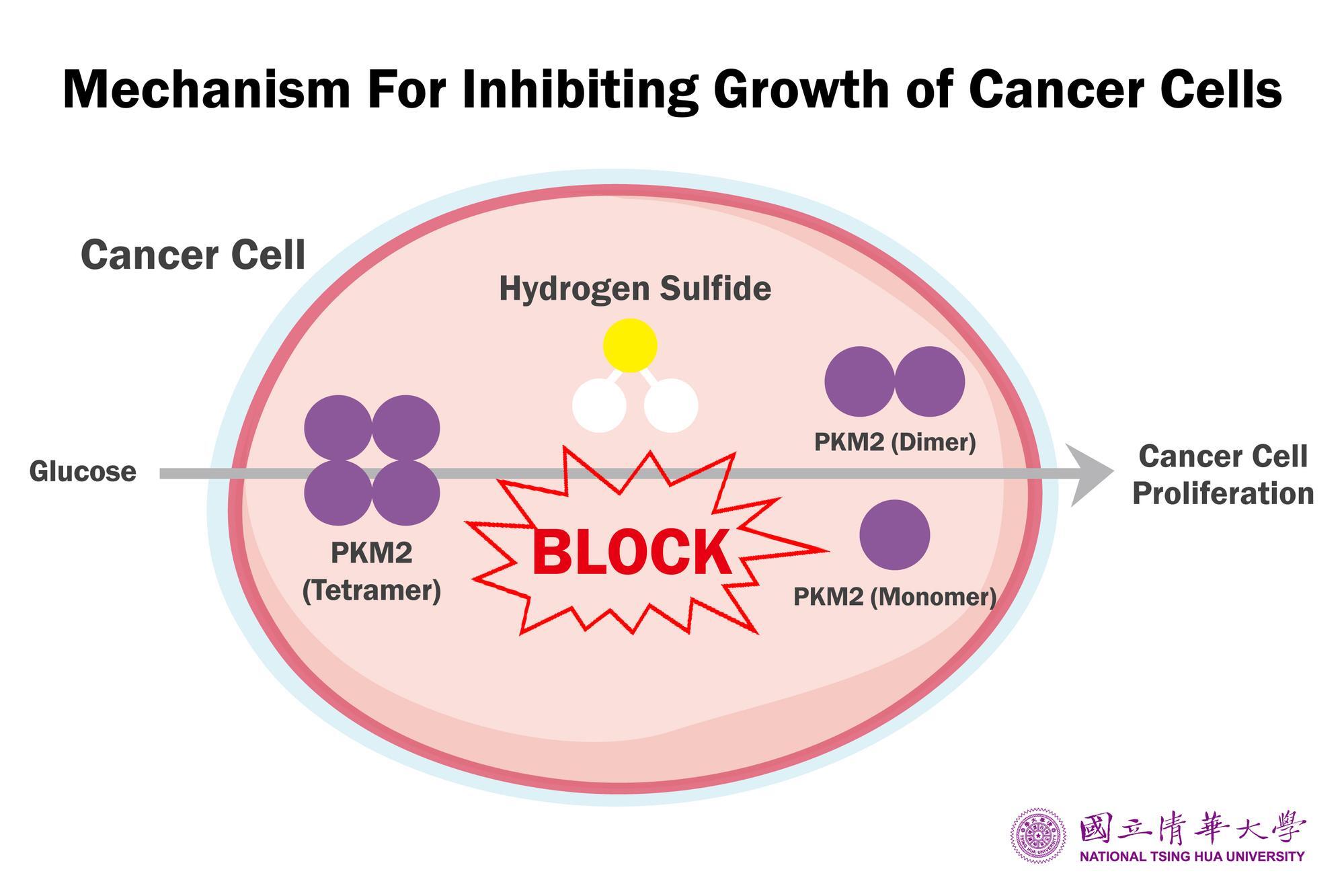2024.12.03
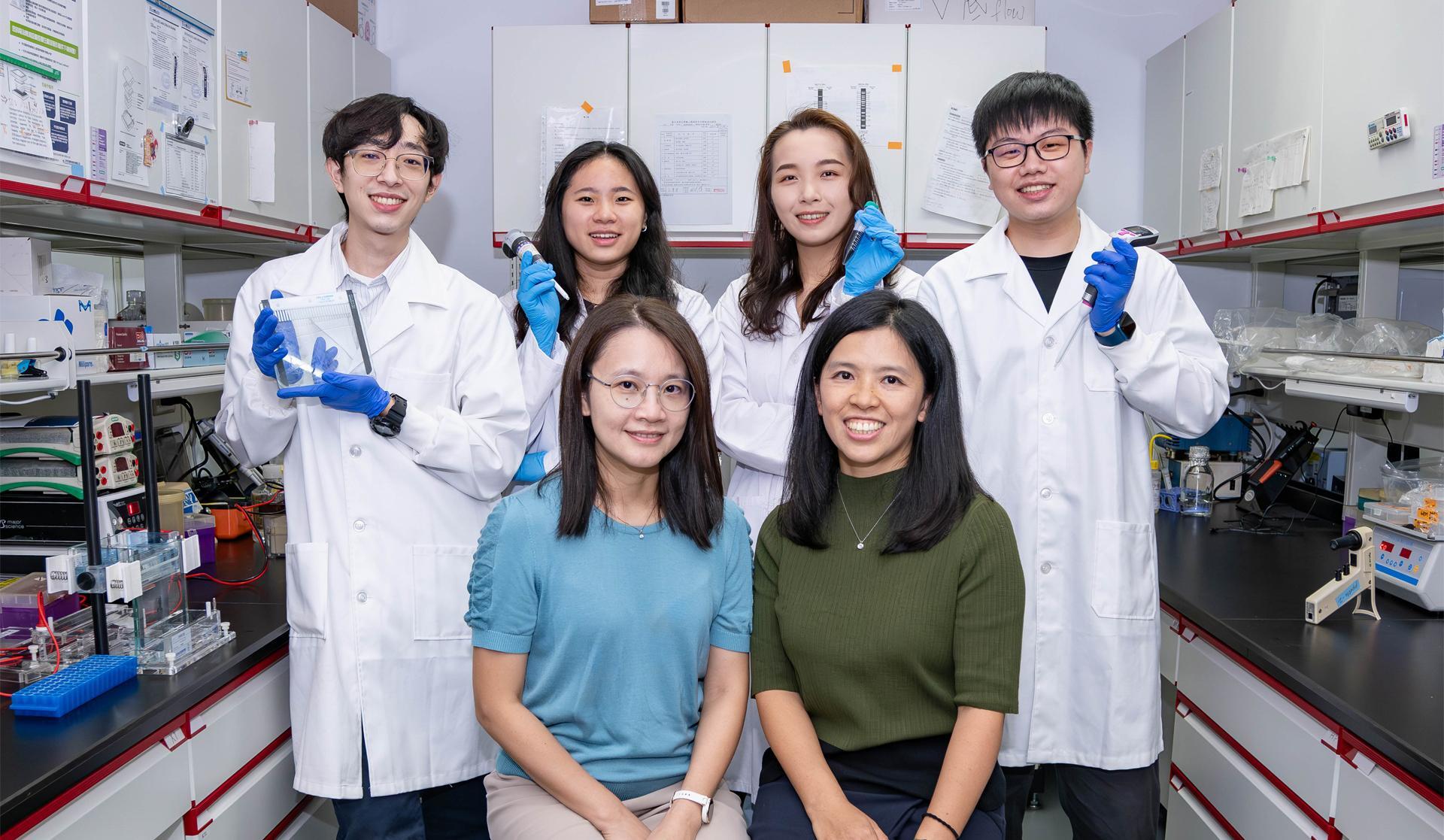
An NTHU research team led by Kai-Ti Lin (林愷悌) (front right) and Hui-Chun Cheng (鄭惠春) (front left) has identified the mechanism behind the proliferation of cancer cells.
Associate professors Kai-Ti Lin (林愷悌) of the Institute of Biotechnology and Hui-Chun Cheng (鄭惠春) of the Institute of Bioinformatics and Structural Biology at National Tsing Hua University (NTHU) in Taiwan have jointly identified the molecular mechanism by which cancer cells rapidly multiply---a mystery that has puzzled the scientific community for nearly a century. They found that cancer cells release hydrogen sulfide gas, which changes the structure of an important protein in the cells, allowing cancer cells to utilize large amounts of glucose for biosynthesis, thereby accelerating tumor growth. Their research has recently been published in the international journal Nature Communications.
In this groundbreaking interdisciplinary research, Lin worked on the cell biology of cancer cells and Cheng provided the protein structure analysis. They had been classmates in the Department of Life Sciences, NTHU, and after returning to their alma mater to teach, they began to regularly discuss their research. By combining their areas of expertise, they succeeded in finding a way to inhibit the proliferation of cancer cells.
German scientist Otto H. Warburg discovered the unique respiration of cancer cells a hundred years ago. Normal cells generate energy by using oxygen for aerobic respiration; by contrast, even in an environment with sufficient oxygen, cancer cells tend to consume glucose mainly through a metabolic pathway called glycolysis, a process that provides precursors for the synthesis of DNA, RNA, and protein---the nutrients required for rapid tumor growth. This discovery was named the Warburg effect and earned him the Nobel Prize.
But why are cancer cells so fond of consuming glucose? For a century, this question lacked a complete explanation-until the recent work by Lin and Cheng added a crucial piece to the puzzle.
Lin said that in a hypoxic tumor microenvironment, cancer cells secrete hydrogen sulfide and send a signal to the tetrameric protein pyruvate kinase (PKM2), causing it to break down into smaller dimers or monomers. In this modified mode of activity, cancer cells begin to absorb more glucose and to synthesize DNA, resulting in rapid proliferation.
Cheng added that just as a logistics system requires a barcode to deliver a package to its destination, hydrogen sulfide also puts a mark at specific positions on PKM2 protein, changing its structure and activity. “As soon as the logistics barcode is changed, the pathway used by cancer cells to metabolize glucose is also changed,” Cheng explained.
The research team used gene editing technology to prevent hydrogen sulfide from marking specific positions on pyruvate kinase, which allows it to maintain its original tetramer structure consisting of larger molecules, and causes cancer cells to resume aerobic respiration. When the cells no longer utilize nutrients by consuming glucose, the tumor can't grow.
The research team also conducted experiments on mice to confirm that their findings can effectively suppress the growth of breast cancer tumors “We are hoping to use this new strategy to develop a new drug for treating cancer,” Lin pointed out.
In addition to Lin and Cheng, the team included two other female scientists at NTHU: Distinguished Professor Wen-Ching Wang (王雯靜) of the Department of Life Sciences, who provided key protein materials; and Professor Lily Wang (王慧菁) of the Institute of Molecular and Cellular Biology, who assisted in microscopic analysis.
The research team is particularly grateful to Lu-Hai Wang (王陸海), vice president of the University of Chinese Medicine, and Hsing-Jien Kung (龔行健), chair professor at Taipei Medical University, for their valuable expertise and for providing an opportunity to translate the findings to clinical applications.
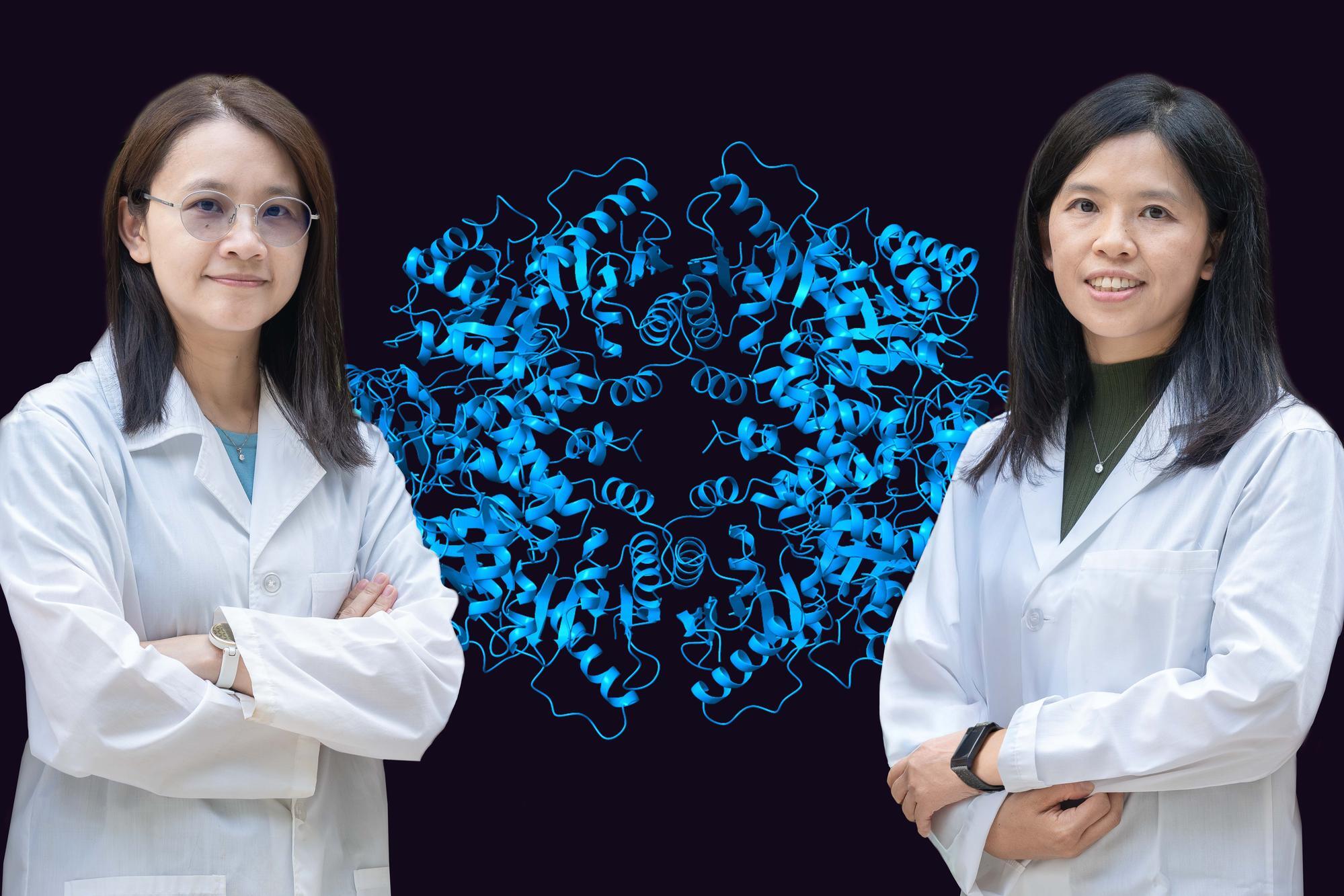
Lin (right) of NTHU's Institute of Biotechnology and Cheng (left) of the Institute of Bioinformatics and Structural Biology have identified the mechanism behind the proliferation of cancer cells.
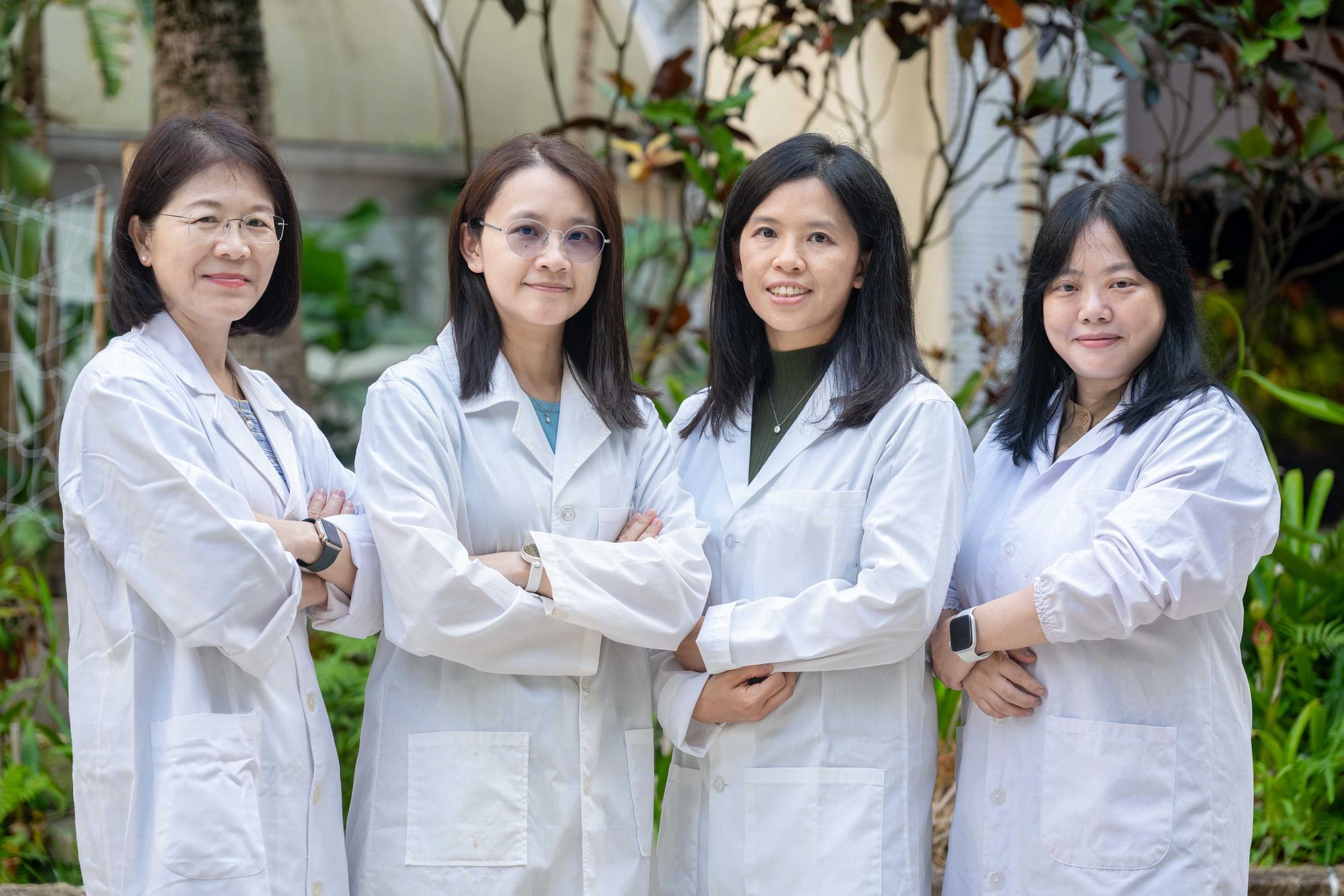
Team members (left to right): Distinguished Professor Wen-Ching Wang (王雯靜) of NTHU's Department of Life Sciences, Hui-Chun Cheng (鄭惠春), Kai-Ti Lin (林愷悌), and Professor Lily Wang (王慧菁) of the Institute of Molecular and Cellular Biology.
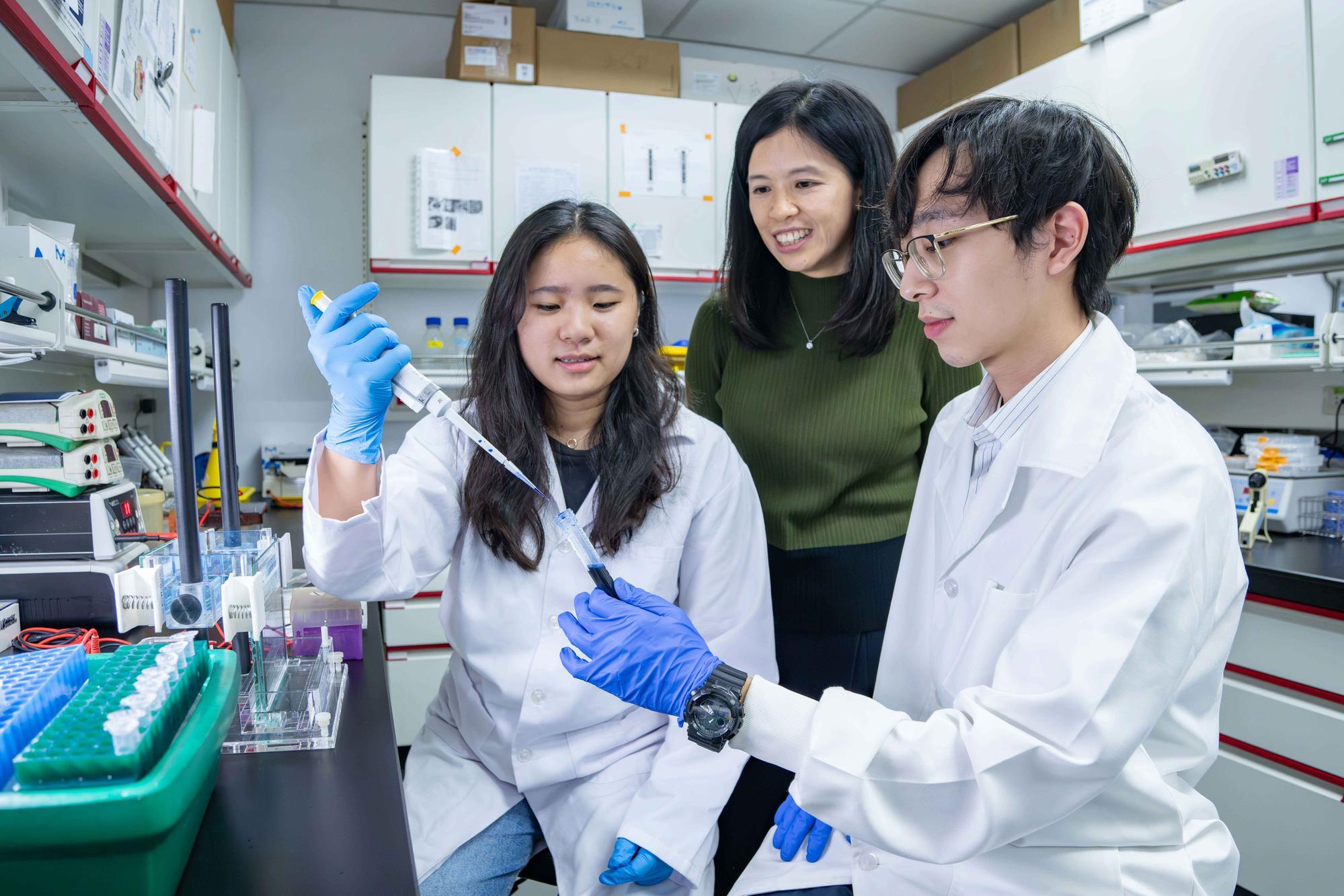
Kai-Ti Lin (林愷悌) (center) guiding Ph.D. student Zhong-Liang Wang (王重良) (right) and M.A. student Ming-Zhen Zou (鄒明蓁) in conducting an experiment at NTHU on proteins and the metabolic mechanism of cancer cells.
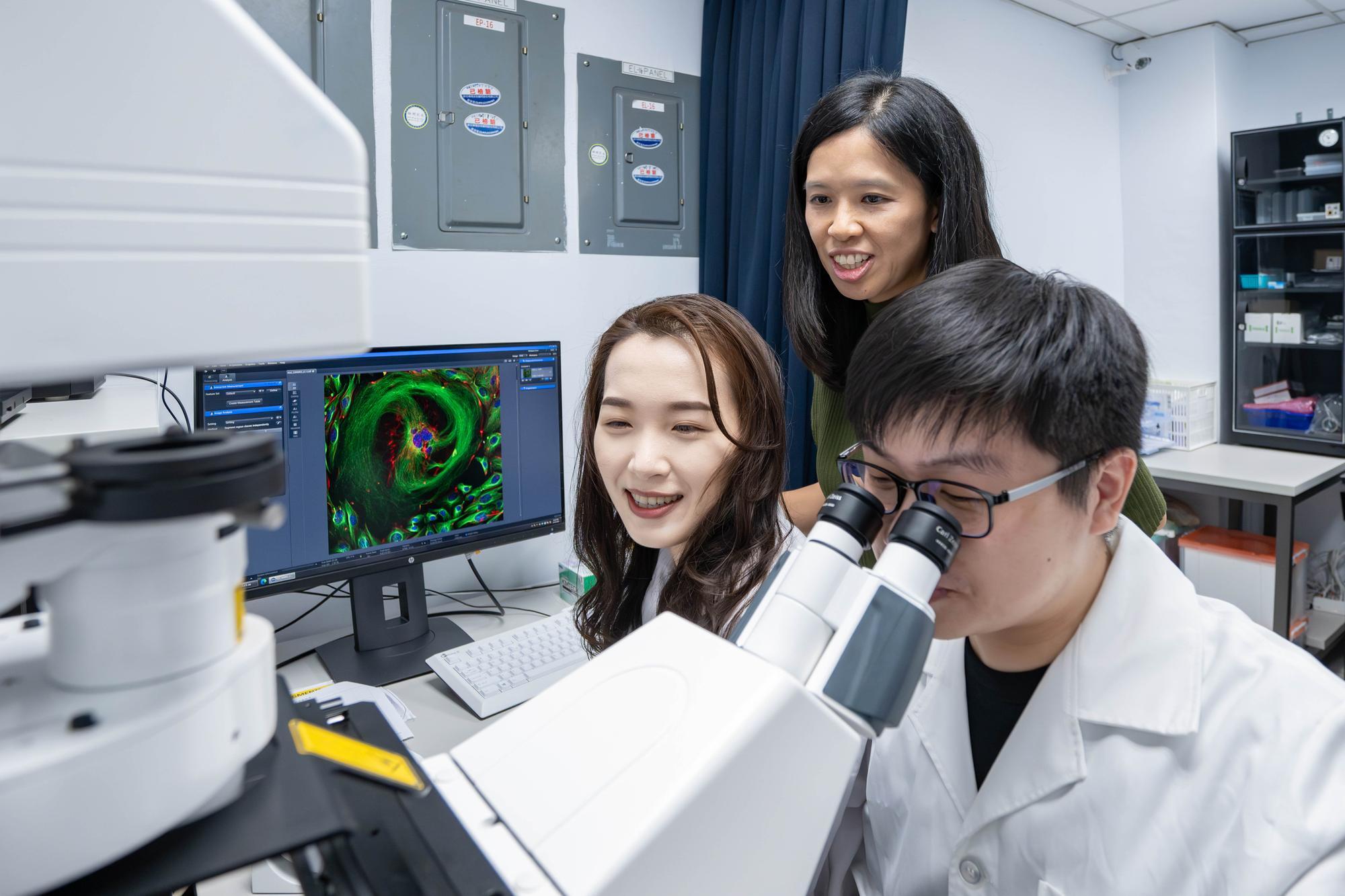
Kai-Ti Lin (林愷悌) (center) guiding Ph.D. student Bo-Cheng Jian (簡柏丞) (right) and M.A. graduate Rong-Xuan Wang (王榕萱) in using a confocal microscope to observe the transformation of cancer cells.
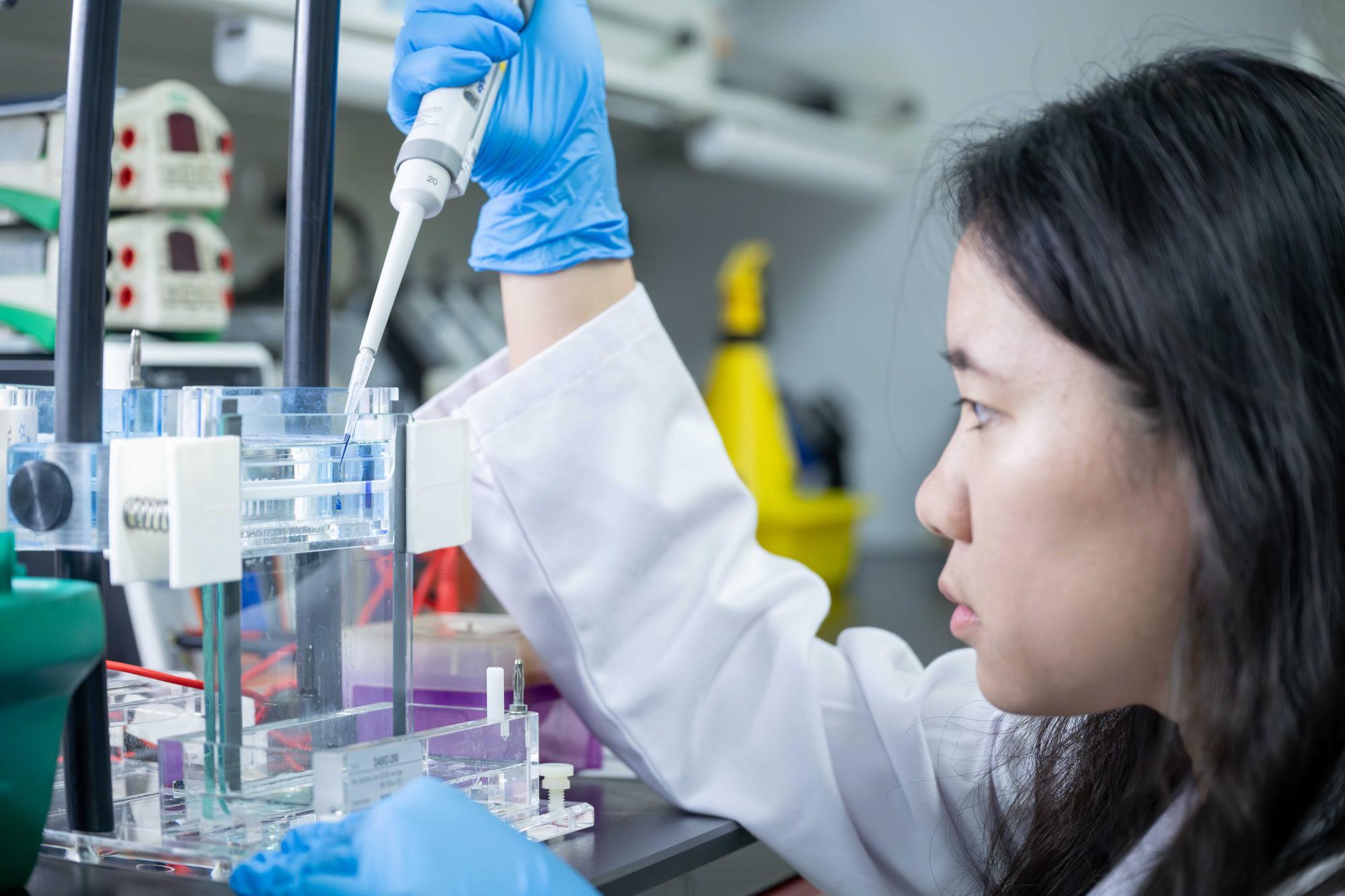
The NTHU research team found that the hydrogen sulfide gas released by cancer cells is a key factor in their rapid proliferation.
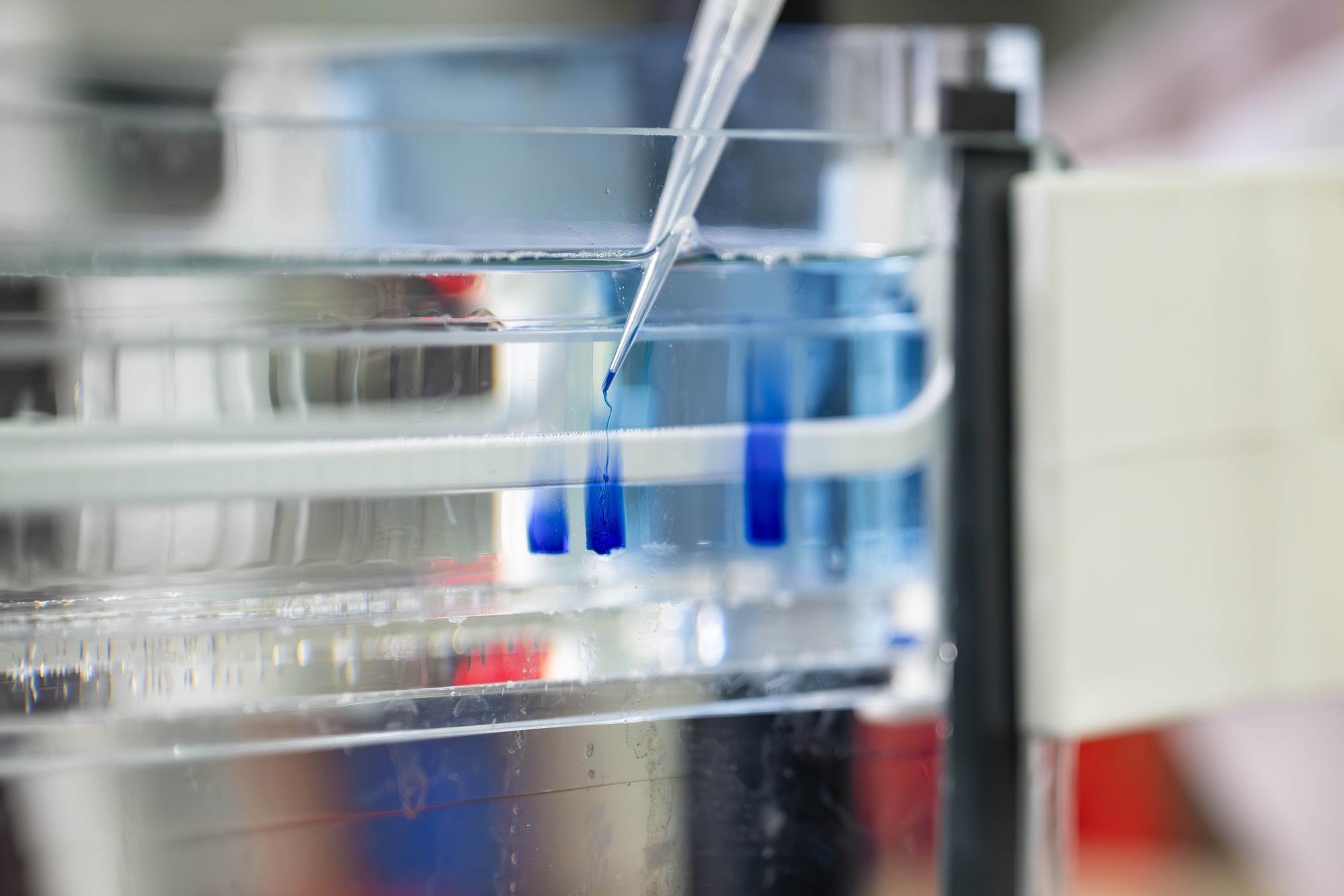
The NTHU research team used protein vertical electrophoresis experiments to study how hydrogen sulfide changes the protein structure of cancer cells.
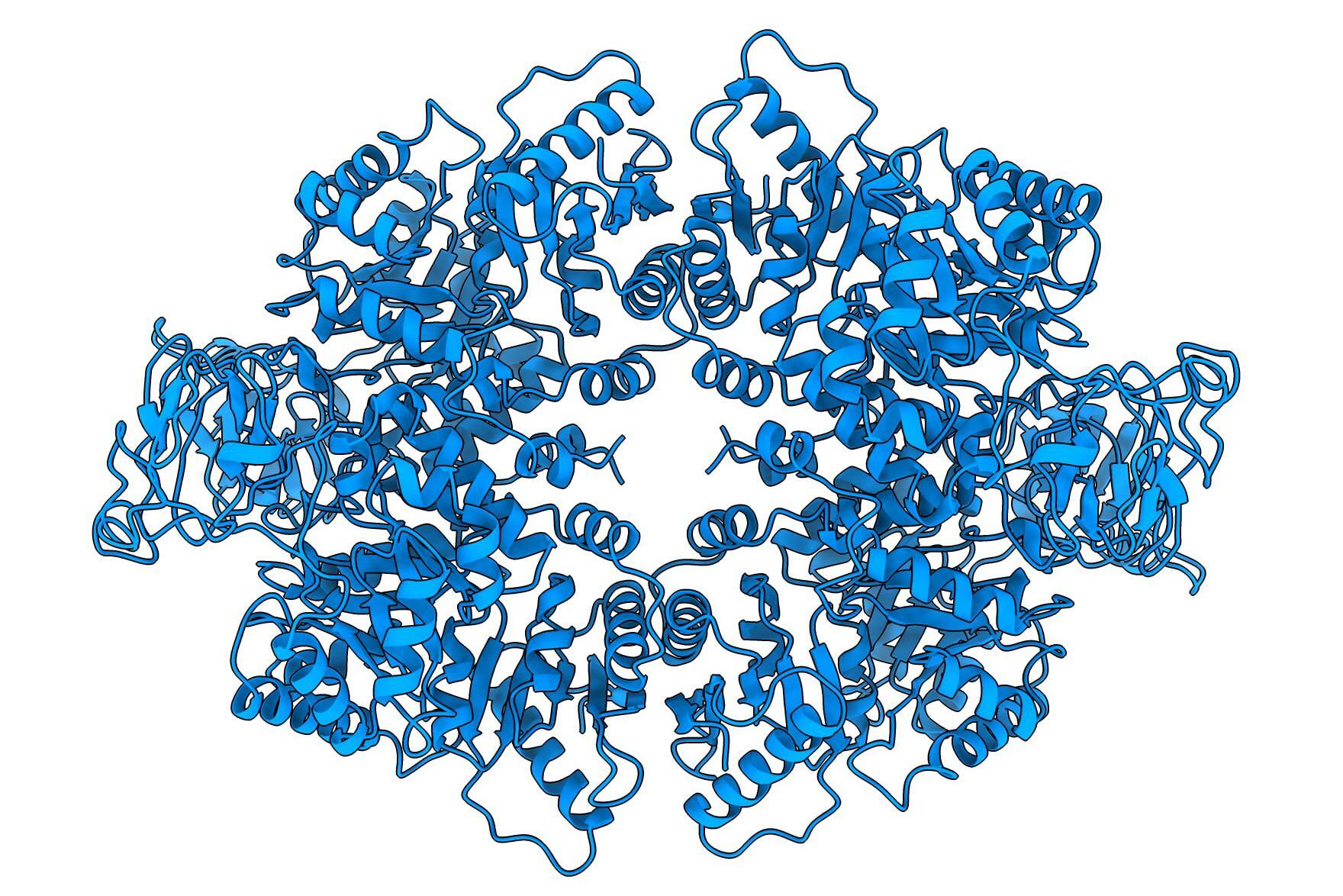
The tetramer structure of PKM2 before being affected by hydrogen sulfide.
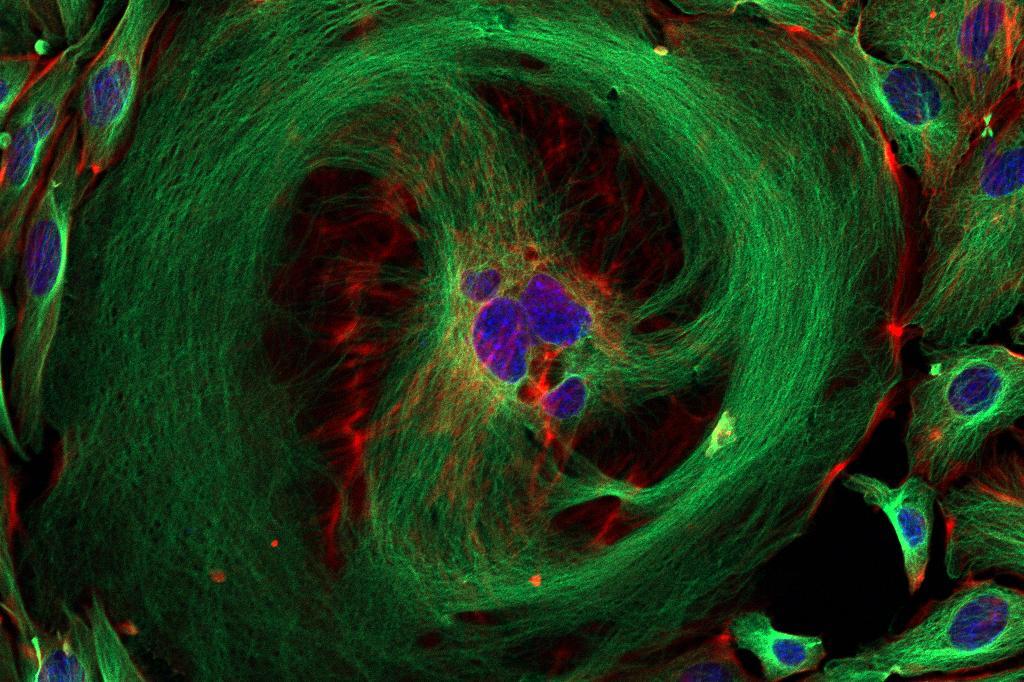
Microscopic image showing abnormal division of cancer cells.





